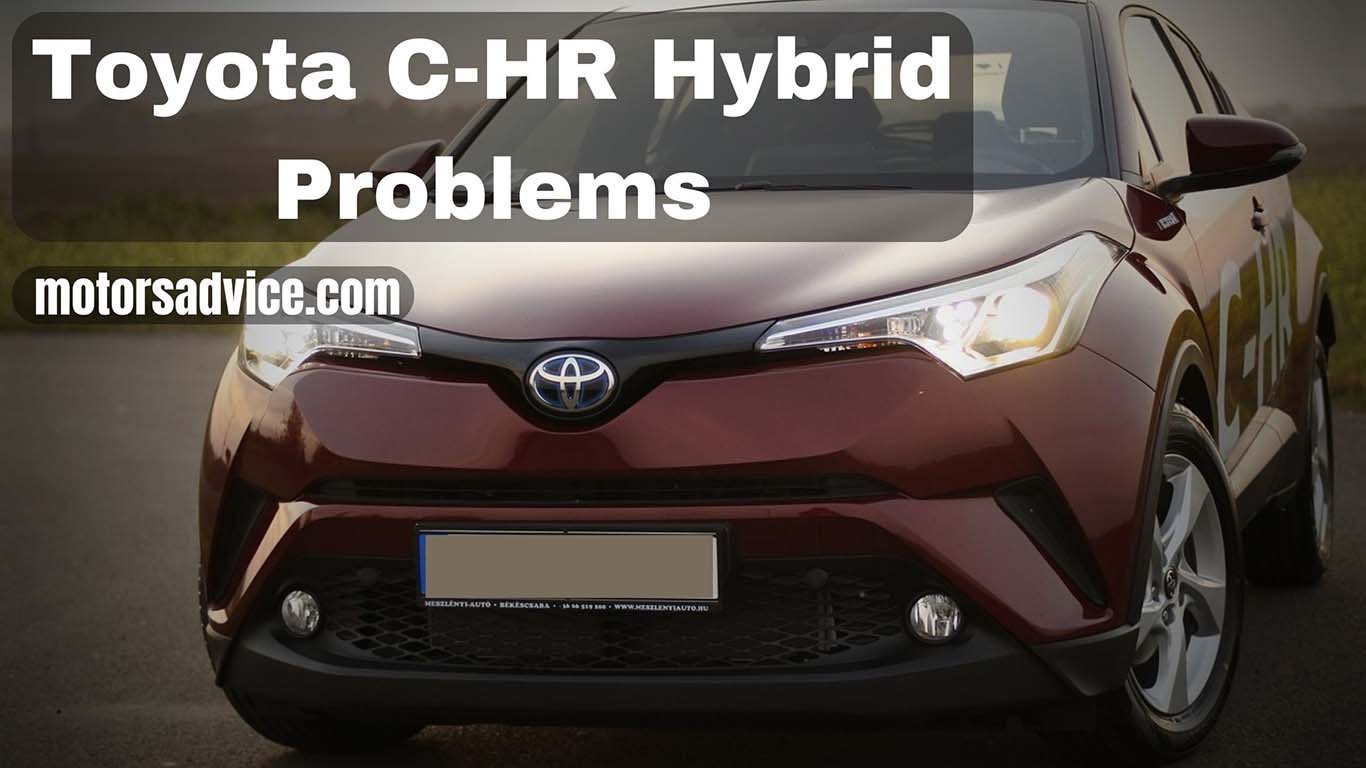The Toyota C-HR is a compact SUV known for its user-friendly driving experience and affordability. It’s also a perfect choice for individuals likely to misplace their cars in parking lots, as it unquestionably catches the eye. While generally dependable, it faced five recalls in five years and garnered some grievances from owners. The first-generation C-HR generation has seen electrical, mechanical, and safety issues. This post discusses the Toyota C-HR hybrid problems and the fixes you can implement.
Toyota C-HR Hybrid Problems
-
Transmission Issues of C-HR Hybrid
Many Toyota C-HR drivers have expressed dissatisfaction with their transmissions, experiencing premature, unsettling issues. Some mentioned initially hearing subtle engine noises that later escalated into unsettling grinding and whining sounds, with the transmission problem only becoming apparent after consulting dealers.
Owners have been particularly concerned about these issues arising early in the vehicle’s lifespan. One owner, with just 10,500 miles on their C-HR, suspected transmission trouble. Reports also mentioned similar problems in C-HR models with mileage ranging from 35,000 to 100,000.
Additionally, concerns arose regarding the financial burden of transmission replacements, forcing some to resort to used replacements due to the costs involved.
Possible Causes and Solutions:
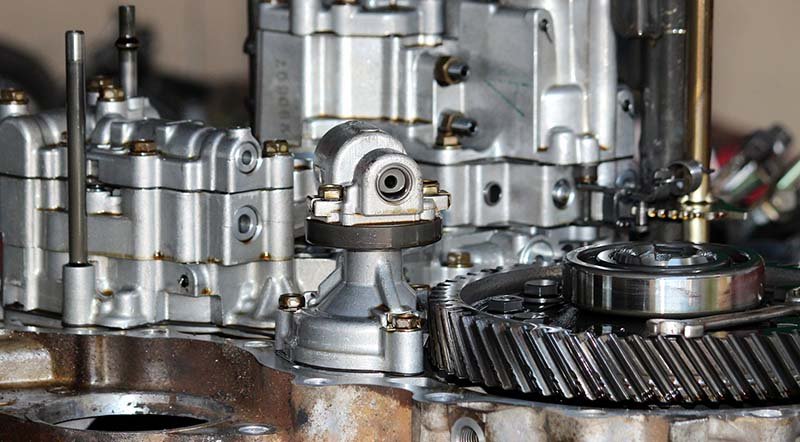
Here are a few factors that could lead to premature transmission problems in your C-HR, along with potential remedies.
· Low Transmission Fluid:
Insufficient transmission fluid disrupts the car’s optimal performance.
Solution: Use the specified type to ensure the fluid level is adequate and inspect for leaks. If problems persist, seek expert evaluation and prioritize routine maintenance to avert future issues.
· A Clogged Filter:
Filters play a vital role in maintaining transmission efficiency but tend to become obstructed, leading to potential transmission issues. A blocked filter could ultimately result in complete transmission failure.
Solution: To tackle a congested air filter in your Toyota C-HR Hybrid, simply locate the filter housing, swap out the obstructed filter for a fresh one, and ensure it’s firmly reinstalled. This regular upkeep enhances both engine performance and fuel economy.
· Defective Torque Converter:
The torque converter circulates transmission fluid. A malfunctioning converter disrupts fluid pressure, causing erratic performance.
Solution: Seek a professional mechanic’s assessment and explore solutions such as repair, replacement, fluid changes, or solenoid replacement, considering the problem’s extent and warranty. Routine maintenance aids in averting potential issues.
-
Electrical Issues of C-HR Hybrid
The 2021 Toyota C-HR encountered electrical system problems, particularly with electronic control units (ECUs) and programming insufficiencies. Certain ECUs inaccurately discern trim levels, resulting in confusion between XLE Premium and LE models.
For 2018 C-HR editions, starter troubles resulted in extended cranking and sporadic startup failures, leaving some drivers in inconvenient situations.
Likewise, 2020 C-HR drivers experienced problems concerning the Tire Pressure Monitoring System (TPMS) inaccurately reading tire pressure, resulting in deceptive alerts.
The usage of a soy-based wiring harness in the C-HR renders it susceptible to harm from rodents, resulting in electrical issues and the possibility of engine shutdown.
Air conditioning complications, including the emission of warm air and a two-minute delay in cooling, have similarly been registered, frequently arising shortly after acquisition. These challenges have left Toyota C-HR owners feeling quite exasperated.
Possible Causes and Solutions:
-
Issues with the ECU:
Potential issues might arise with the ECU responsible for managing various vehicle functions, including power delivery, gear shifts, emissions compliance, safety enhancements, and fault monitoring.
Solution: To address this, seek a professional mechanic’s assistance for diagnostics, potential repair or replacement, and warranty evaluation. Adhering to the manufacturer’s maintenance schedule can aid in preventing ECU-related problems.
-
Starter issues:
The starter engages the engine’s flywheel to kickstart the combustion process, enabling vehicle ignition. Starter issues may lead to engine starting problems or failure.
Solution: Start by examining the battery and connections, then assess the starter relay and motor. For intricate hybrid system problems, consult a professional mechanic.
-
Faulty soy-based wiring harness:
A soy-based wiring assembly plays a crucial role in safeguarding and insulating electrical wiring, enabling the transmission of power and signals to different parts of the vehicle. Certain cars have faced issues with these soy-based assemblies, particularly vulnerability to damage from rodents and environmental elements.
Solution: To address these kinds of car problems, contemplate diagnostic scanning, potential repair or replacement, and implementing protective measures. Additionally, explore the possibility of warranty coverage and any applicable recalls to seek assistance from the manufacturer.
· Air Conditioner malfunctioning:
Air conditioner malfunctions in a Toyota C-HR Hybrid are commonly attributed to a Freon leak, depleting cooling capacity. Another issue can be a clogged condenser impeding refrigerant cooling, while electrical faults, like faulty wiring, may disrupt AC function. Also, malfunctioning cooling fans can blow hot air, often due to visible cracks.
Solutions:
- Freon Leak: If you suspect a Freon leak, consult a certified technician for detection and repair, followed by a proper refrigerant refill. Timely action is vital to prevent system damage.
- Blocked Condenser: A clogged condenser can usually be fixed by cleaning it. It means removing dirt and debris that obstruct airflow. An experienced auto technician can carry out a comprehensive cleaning for efficient cooling. Routine maintenance and condenser cleaning help prevent future obstructions.
- Electrical Issues: Electrical troubles, like faulty wiring, demand professional diagnosis and repair. Technicians will assess the wiring, detect damaged or faulty parts, and replace or fix them accordingly. Avoid DIY electrical repairs for safety reasons unless you have the relevant expertise.
- Defective Cooling Fans: If issues arise with the cooling fans, you should swap them out. Damaged fans can result in inadequate airflow and reduced cooling efficiency. An experienced technician can spot the problem and install new fans for optimal cooling.
-
Battery Issues of C-HR Hybrid
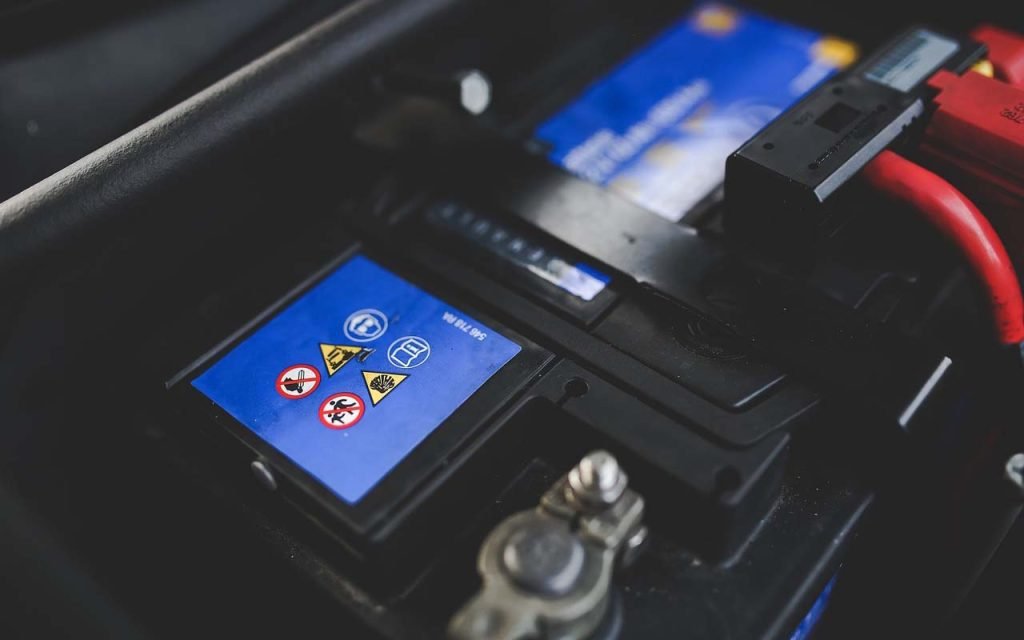
Owner worries have surfaced over reoccurring battery issues in the 2017 and 2018 Toyota C-HR models. Drivers have shared unsettling encounters, including batteries losing charge after a single day of inactivity or failing twice a week, even with daily usage.
Interestingly, these problems were more prevalent in cars exceeding 20,000 miles and, unexpectedly, brand-new vehicles with under 1,000 miles when left idle for merely four days.
Certain accounts have also discussed issues with control center short circuits stemming from incorrect jump starts. These challenges related to the battery have caused frustration among owners of Toyota C-HR vehicles, who are actively seeking resolutions to ensure the reliability of their vehicles.
Possible Causes and Solutions:
Here are factors that could lead to your Toyota C-HR’s battery depleting faster than expected:
· Parasitic Drain:
Specific vehicle systems may unintentionally consume battery power even when the car is inactive, resulting in a gradual loss of battery charge.
Solution: A qualified technician can conduct a test to uncover the culprit behind the power drain, enabling them to fix or substitute the problematic component.
-
Faulty Components:
Issues with malfunctioning or faulty parts such as alternators, voltage regulators, or starters can result in increased power usage and ineffective charging, leading to battery troubles.
Solution: Schedule a professional inspection of the vehicle’s electrical system to pinpoint and replace any problematic components, including alternators, voltage regulators, or starters.
· Battery Aging:
Over time, batteries naturally deteriorate, particularly in older units or when exposed to extreme temperature variations, leading to diminished charge-holding capability.
Solution: When the battery is old or no longer maintains a charge effectively, consider replacing it. Routine battery replacement as part of regular maintenance can prevent unforeseen complications.
-
Electrical Issues:
Wiring issues, electrical system disruptions, and damaged connections can impact battery health.
Solution: Engage a skilled technician to identify and fix wiring problems, shorts, or damaged connections within the electrical system.
· User Habits:
Regularly taking short trips or leaving the vehicle unused for extended durations can lead to battery drain problems.
Solution: Minimize short trips when feasible and employ a battery maintainer or trickle charger for extended periods of vehicle inactivity.
· Environmental Factors:
High and low temperatures can impact battery life and efficiency.
Solution: To combat extreme temperature effects, think about utilizing a battery insulation kit or parking in a climate-controlled space during extreme weather.
· Manufacturing Defects:
Issues in the vehicle’s electrical system or battery may sometimes result from manufacturing flaws.
Solution: If you suspect a manufacturing defect, reach out to the automaker or dealership for warranty support or possible recall information.
-
Aftermarket Modifications:
Adding non-factory electronic components or modifications to your car may heighten the electrical demand, potentially inducing battery issues if installation and supervision aren’t handled correctly.
Solution: Ensure precise installation of non-factory electronics or enhancements and seek expert advice to evaluate if added electrical demands contribute to battery depletion. Implement relays or isolators for efficient power management.
· Improper Jump Starts:
Mishandling jump starts may harm the electrical system, including short circuits in the control center.
Solution: When jump-starting, adhere to the manufacturer’s instructions found in the owner’s manual. Employ high-quality jumper cables and establish correct connections to prevent any harm to the electrical system.
-
Mechanical Problems of C-HR Hybrid
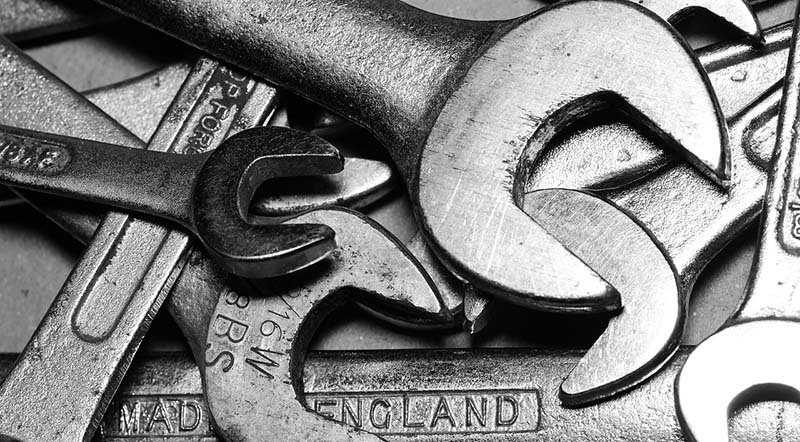
One of Toyota C-HR Hybrid’s problems comes from parking brake issues, with glitches leading to unintended motion, causing accidents and harm to individuals.
Moreover, users of the 2018 and 2019 C-HR editions have disclosed brake malfunctions, culminating in crashes and injuries. Some have also faced difficulties with the Electronic Brake System (EBS), making driving challenging without power-assisted braking.
Although the C-HR provides a comfortable ride over significant road imperfections, it encounters difficulties on uneven or damaged surfaces, resulting in excessive cabin noise and discomfort. These challenges underscore the necessity for vehicle performance and safety enhancements.
Possible Causes and Solutions:
-
Parking Brake Malfunctions:
Parking brake malfunctions are one of the standard Toyota C-HR problems. They may arise from defective parts like the brake actuator or cables.
Solution: For a fix, consult a qualified technician for inspection and potential component replacement or system adjustment.
· Brake Failures:
Brake problems can result from issues with brake fluid, pads, lines, or the master cylinder.
Solution: Prioritize routine maintenance, including fluid level checks and pad replacements, and seek professional inspection for persistent issues or component concerns.
· Electronic Brake System (EBS) Problems:
EBS difficulties may arise from sensor malfunctions, electrical concerns, or system software glitches.
Solution: Consult a certified technician to diagnose and pinpoint the EBS problem, whether it’s a sensor malfunction, wiring complication, or software glitch, and take appropriate measures, which may include repairs or software updates.
· Suspension and Noise Challenges:
Discomfort and noise on uneven roads could result from wear on suspension parts, tire-related problems, or suspension system design.
Solution: Dealing with suspension and noise challenges might entail inspecting and replacing worn suspension components, ensuring proper tire care, or potentially modifying the suspension system for improved ride comfort. Seek advice from a skilled mechanic or dealership for guidance.
5. Safety Problems of C-HR Hybrid
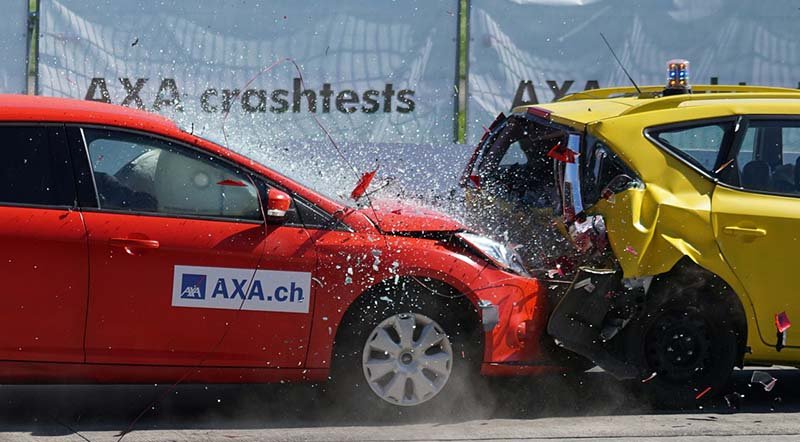
Some of the Toyota C-HR Hybrid problems reported by owners relate to safety. In 2018 models, airbag failures post-collisions have been reported, and investigations couldn’t pinpoint the cause, resulting in injuries and hospitalizations.
Furthermore, the front camera, vital for driver assistance features, may malfunction due to dust accumulation, posing safety risks and turning off associated systems.
While Toyota emphasizes safety, these problems shed light on difficulties some C-HR owners face, emphasizing the need for continuous vehicle maintenance and safety assessments.
Possible Causes and Solutions:
· Airbag Inaction:
Airbag inaction can be intricate, often stemming from sensor malfunctions, wiring concerns, or software glitches.
Solution: To address this, owners must ensure their vehicle’s software, which is available through a Toyota dealership, remains current. Routine vehicle maintenance checks can pinpoint and rectify sensor or wiring issues. If Toyota C-HR Hybrid problems endure, reach out to Toyota for an all-encompassing inspection.
· Front Camera Malfunction:
Dust accumulation on the front camera lens can hinder its functionality. Environmental elements and road debris may exacerbate this problem.
Solution: Regularly cleanse the front camera lens to deter dust accumulation by delicately wiping it with a microfiber cloth. If the issue persists, consult a Toyota specialist for an in-depth evaluation and potential camera replacement.
· Driver Assistance System Failures:
Front camera issues can affect driver assistance amenities such as lane leaving alert and adaptive cruise control.
Solution: Resolve front camera problems, as mentioned earlier. Also, ensure sensors and cameras remain clean for proper driver assistance. For persistent issues, seek diagnosis and repair assistance from a Toyota dealership.
· Vehicle Maintenance:
Inconsistent vehicle upkeep, disregarding software updates, and overlooking recalls can worsen these problems.
Solution: Keep abreast of recalls and routinely arrange maintenance with an authorized Toyota service center. Maintain consistent communication with the dealership to promptly address safety-related concerns.
-
Exterior Problems of Toyota C-HR Hybrid
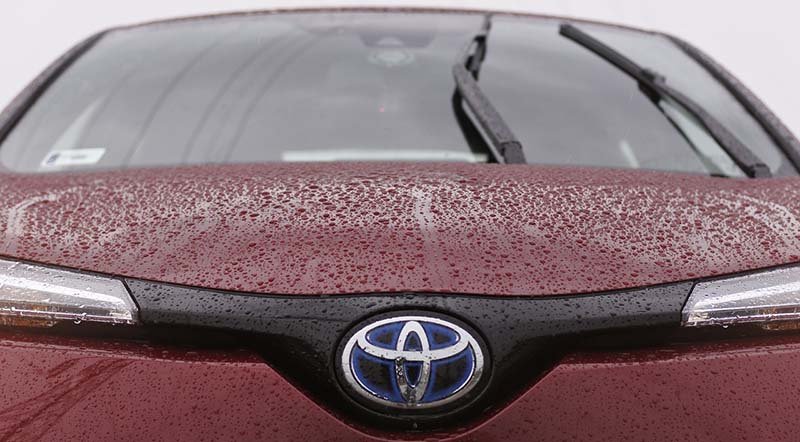
During a strange occurrence with a 2021 Toyota C-HR, the front windshield shattered unexpectedly while the vehicle was parked in broad daylight, seemingly without any reason.
Owners of 2020 C-HR models have also encountered similar problems, with rear windshields cracking or breaking without any apparent impact, leading to distractions, yet the warranty does not include repairs for this issue.
Possible Causes and Solutions:
-
Manufacturing Quality Issues:
Inadequate quality control during production may lead to glass weaknesses, making it prone to sudden shattering or cracking.
· Climate Effects:
Extreme temperature shifts, prolonged sun exposure, or rapid glass temperature changes can induce stress and result in cracks.
· Debris on Roads:
Small rocks or debris propelled by vehicles can impact windshields, initiating cracks or chips that may enlarge over time.
· Structural Stress:
Stress from design or installation flaws can gradually weaken the glass.
Solutions:
- Warranty Check:
Verify if your vehicle falls within the warranty period. If the windshield problem is due to a manufacturing issue, it might be included in the manufacturer’s warranty, potentially covering repair or replacement expenses.
- Insurance Coverage:
Comprehensive car insurance plans often include windshield damage. If it’s not a manufacturing fault and the warranty doesn’t apply, you could file an insurance claim to offset repair or replacement costs.
- Routine Upkeep:
Regular upkeep through maintaining clean glass and early damage checks can proactively prevent worsening problems.
- Aftermarket Shield Guard:
Explore the option of installing an aftermarket shield protection film or glass coverage product to minimize the chance of chips and cracks.
- Safe Driving:
Maintain a secure distance from other vehicles, especially on gravel roads, to prevent windshield damage from debris.
- Climate Control:
Shield your car from rapid temperature shifts by parking in the shade and using sunshades in hot weather.
- Expert Checkup:
If problems persist, consult a skilled technician to assess potential structural or installation issues.
- Authentic Glass:
Opt for Original Equipment Manufacturer (OEM) glass when replacing your windshield to meet quality standards and manufacturer specifications.
Which Toyota C-HR model years should you steer clear of?
The Toyota C-HR’s reputation for “Toyota reliability” took a hit with the problematic 2018 and 2019 models. Owners were dissatisfied with transmission issues, leading to numerous complaints. While the 2018 model had fewer recalls than the 2019 model, both years were far from stellar for the Japanese automaker. As such, it’s best to skip both of these model years.
Is the 2022 Toyota C-HR Hybrid A Good Car to Buy?
The 2022 Toyota C-HR Hybrid boasts a unique appeal for younger buyers, offering comfortable driving and a quality cabin. However, some may find the engine lacks power. It matches rivals’ reliability and continuous improvements, making it a solid long-term choice. You can also opt for the 2020 model year for a used C-HR if you desire modern features.
Toyota C-HR Hybrid Problems – FAQs
What are the most concerning Toyota C-HR hybrid problems?
A prevalent concern among Toyota C-HR hybrid owners involves the soy-based wiring harness’s susceptibility to harm from wildlife and the environment. Furthermore, specific drivers have encountered issues with the windshield unexpectedly breaking or developing cracks.
Is the Toyota C-HR Hybrid a dependable crossover?
The dependability of the Toyota C-HR Hybrid can differ based on personal encounters. Although Toyota is typically known for crafting trustworthy cars, the C-HR hybrid has encountered certain documented concerns, particularly regarding wiring harnesses and windshields. It’s wise to conduct research and take into account feedback from owners and experts prior to reaching a conclusion.
What are some of the cons of the Toyota C-HR Hybrid?
The C-HR Hybrid faces a distinctive challenge with limited rear visibility due to its coupe-like design, potentially making parking and maneuvering more demanding. Furthermore, specific drivers might perceive the rear seat space and cargo capacity as smaller when compared to other SUVs within its category.
Is the Toyota C-HR Hybrid worth my money?
Your decision to purchase a Toyota C-HR hybrid should be based on individual requirements and tastes. It boasts commendable fuel efficiency, an attractive design, and Toyota’s established reliability. Nonetheless, prospective buyers should take note of documented Toyota C-HR problems regarding the wiring harness and windshields and weigh their potential impact on the ownership experience. We suggest taking the vehicle for a test drive and conducting extensive research before arriving at a conclusion.
